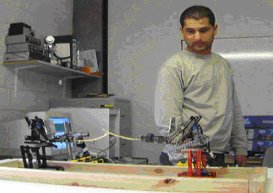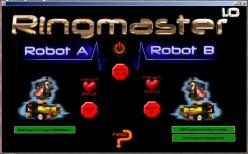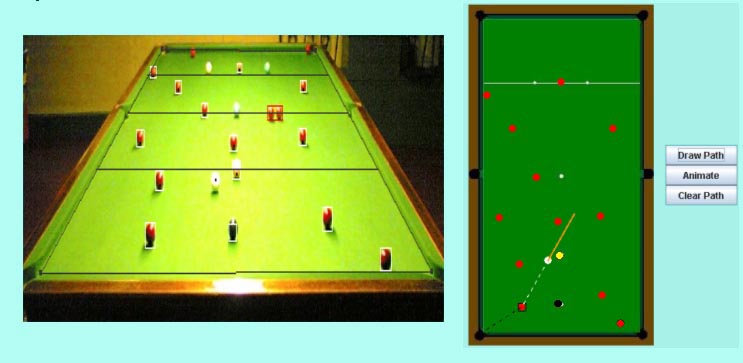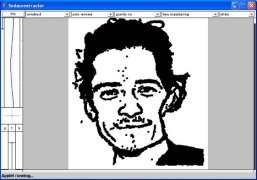A magazine where the digital world meets the real world.
On the web
- Home
- Browse by date
- Browse by topic
- Enter the maze
- Follow our blog
- Follow us on Twitter
- Resources for teachers
- Subscribe
In print
What is cs4fn?
- About us
- Contact us
- Partners
- Privacy and cookies
- Copyright and contributions
- Links to other fun sites
- Complete our questionnaire, give us feedback
Search:
The FUNdamentals of Student Projects
The Computer Science topics you study early on in a computer science career give you the foundations that allow you to create software: innovative things to sell and make money from, programs to write just for the fun of it, or even programs to push forward the boundaries of what has been done before. So before we look at the detail, let's get an idea of what the point is. What kind of thing can you do once you've put the effort in to learn the skills and gain the understanding from all the separate courses? What can you do when you put it all together?
The best way to see is to look at a few student projects. After all the aim of the project module is for you to show off what you can do to the examiners (and create something that really interests you). All the following are projects of Queen Mary Computer Science students in their third year. Some you can even try for yourselves. Many of the interactive games in the cs4fn FUNdamentals pages were also written by our students. Many of these students had no computer science or programming skills when they started their degree!
Blade: the emotional robot
Zabir built a robotic face (from Lego mindstorm) called Blade for his third year project. Blade was capable of expressing emotion, and software that allowed the robot to respond to the tone of the user voice. In the future many more devices around the home may have the ability to recognise and respond to emotion. Read more about Blade. [Watch the video]
Zabir went on to work in the city for Merchant Bank, JP Morgan
Robot fencing

Blaze, the emotional robot, had to be taken apart eventually - which was a very emotional thing to do as he seemed more than just lego somehow. From his rubble sprang a new project though. Ahmed decided his project would be to create two robots who fenced with each other. One robot was controlled by a flexible exoskeleton that the student built to convert his arm movements into movements in the robot. The second robot was controlled by artificial intelligence: its skills in fencing were created by obtaining 'know how' from experts on the college Fencing team and building a set of rules for the robot to follow allowing it to react to the attacking robot in a human like way.
Ahmed went on to work for Loyds TSB
Autocartoon
The Sodacartoon project was a team project. Students Lila and Akbar created a software package that takes a picture of your face and turns it into a cartoon drawing. The system works like a human cartoonist, exaggerating the differences between the person's face that they are drawing and the average face. So for example if you have slightly larger than normal ears then a cartoonist will draw them even larger. Their software also lets you turn your cartoon into a Sodaconstructor drawing. Try it for yourself
Both Lila and Akbar decided to stay at Queen Mary to do PhDs
Sign language tutor

Lila's individual project was an interactive tutor software that teaches deaf and non-deaf users Sign Language. The software, which includes games and quizzes as well as the learning sections (for beginners and advanced), is available on CD and DVD and is currently being commercialised by the company Microbooks. They believe it will do very well as it is the first interactive and substantial system aimed at children, both deaf and non deaf.
Emoticons (smilies) in a multiple users chat room application

Computer technologies mean that we live in a world where much of our communication is based on written rather than spoken words; phone texts, emails and chat rooms are popular examples. If we are speaking to someone face to face their expressions and tone of voice give us clues to what they are meaning. Text can be a problem though as often the meaning of phrases can be mistaken. In this project a multiple user chat room was built from scratch, where a face represented each of the users, the expression on that face was controlled by the users which we showed experimentally this helped better communication in the chat room group.
Human Error SpaceInvaders
Rob was the member of a team whose project involved devising experiments to find out what kinds of situations lead people to make mistakes using computers. They wrote a series of quiz and game programs that had different kinds of interfaces and also recorded when people made mistakes. They then did experiments to find out which systems led to people making mistakes most often. Rob then worked as a summer intern in the college to create a version of this for cs4fn. As a result he is a co-author on a research paper presented at an academic conference this summer based on the new results about human computer interaction found from people playing his Space Invaders game. More on it in the Human-computer interaction FUNdamentals or go play it now
Rob is about to start work with a Merchant bank
Seesawing robots

In this project, Sammy built two robots from Lego Mindstorm kits and developed software to allow the robots to communicate with one another to "play on a seesaw". (The project also involved some carpentry to build the seesaw!). The software to run on the robots was challenging, the code needs to be compact and allow the robots to react quickly. To finish it all off, Sammy wrote the Ringmaster program shown, which allowed him to control the robots and make them seesaw or stop as required.
Sammy now works for the Ford Motor Company
The smart phone that plays Snooker

Zubair is interested in Snooker. Good players are able to work out given a situation on the table, what the alternatives are - what angles to use to make the pot or the snooker. Zubair decided for his project to create a system that would help less experienced players get the geometry right to make the same shots...and it's their mobile phone that does all the work. Find out more.
Zubair now works for LogicaCMG
Making faces

Hiren created a system to "make faces". We can think of colour as made up of adding 'colour elements' (wavelengths). Similarly can we find the set of images to add together to make faces. Shown are these 'face elements', and in the red box a set of new faces made by mixing together the 'face elements'. Interesting fact: the face element at the top left is the "average" face from the large set of different faces used to build the system, to most people it looks particularly attractive, so do people prefer average faces?
Hiren became a University systems programmer
Steganography

Paul's project was about steganography (the word means hidden writing). His software allows the user to hide information in pictures. By understanding the way information is stored in a digital picture and also how human brains work when looking at a picture, we can find ways of hiding the extra text information in the picture so that the human observer wont notice it is there. Whilst this might be used for spies, it is also useful for adding a digital watermark to images, so the person who created it can prove it is theirs if pirated.
Paul went on to work for the Human Embryology Authority
Synthetic Iris

Naresh developed a computer model of the human iris (the coloured bit in your eye) for his project. His model used an understanding of the biology actually involved in the growth of your iris. He turned this medical information into a computer simulation which gives the computer generated iris its realistic appearance. Application of this method could be in computer graphics for movies, or for testing iris scan security systems. An expert in the use of iris scanning for identification from Cambridge University said Naresh's Irises were the most realistic synthetic ones he had seen.
Naresh is now a start up company entrepreneur





